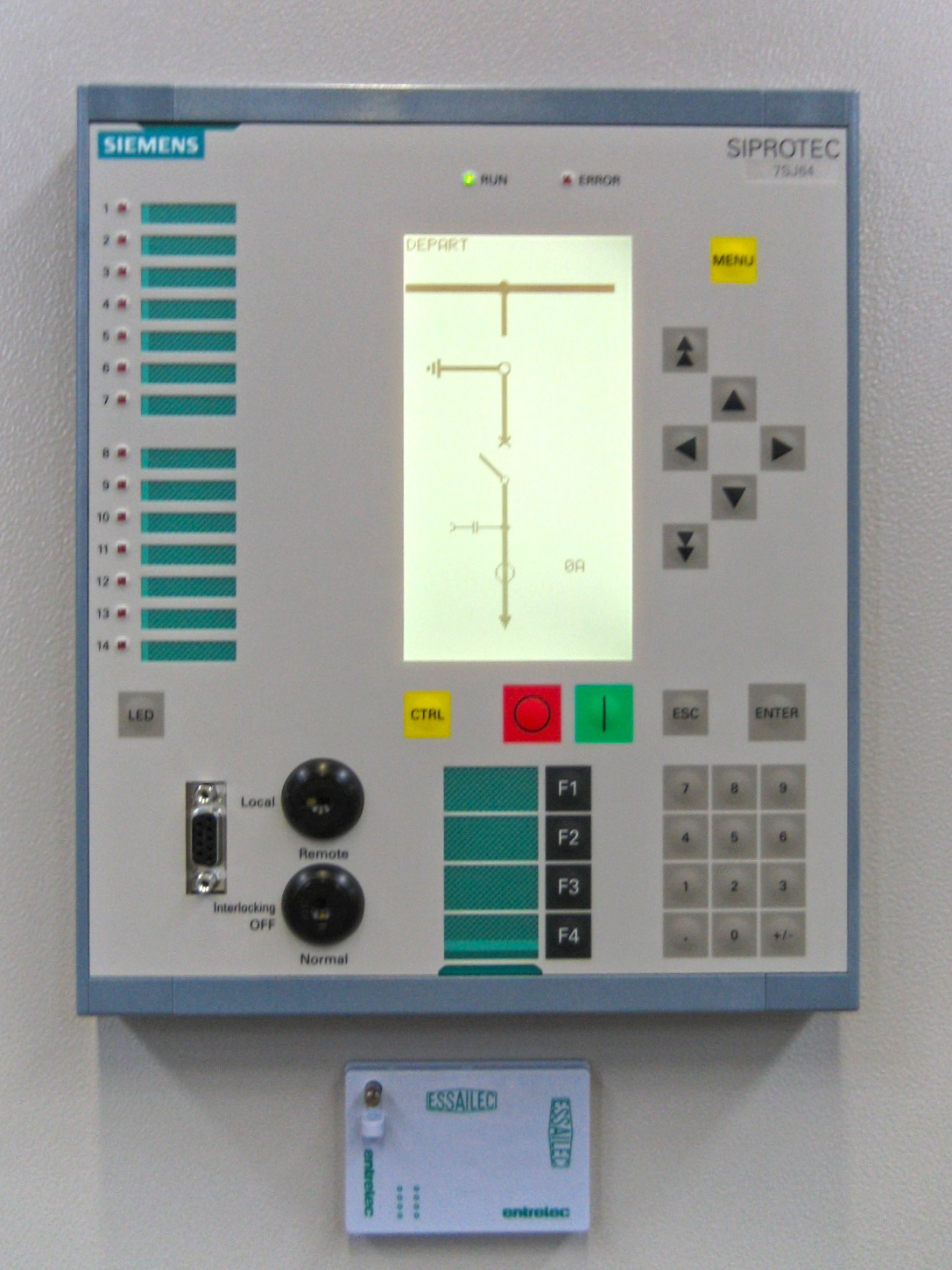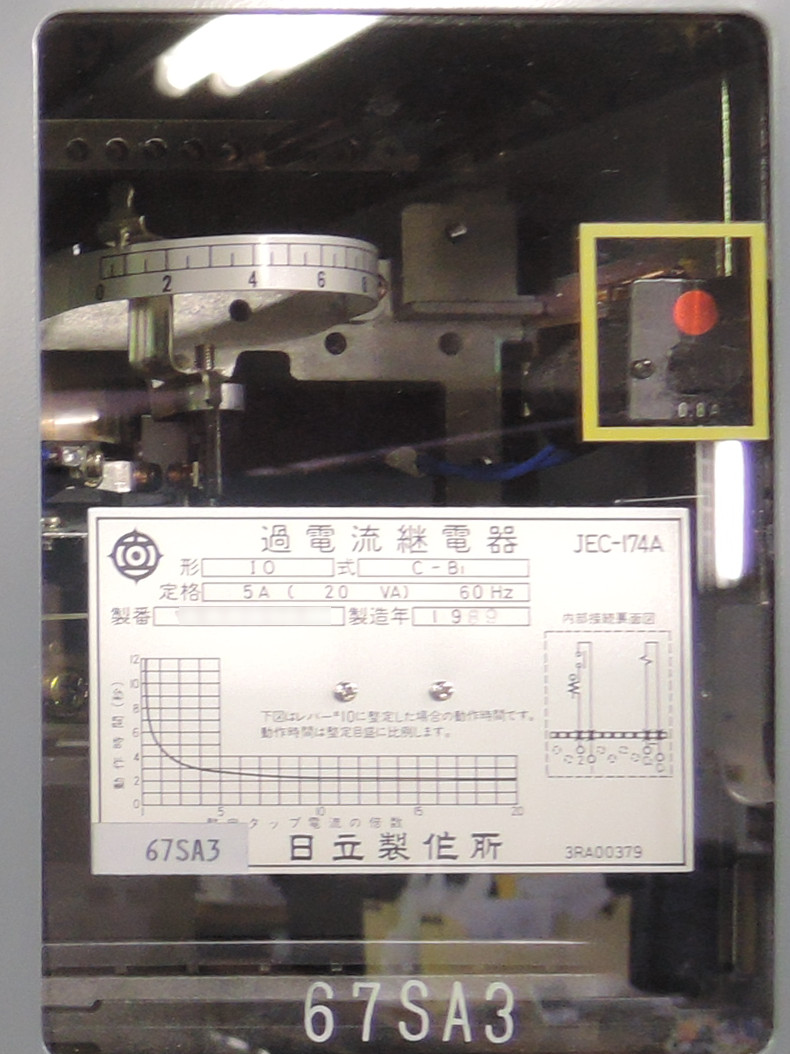Types of Transformer Protection Relays and its Uses
Protection relays are protective devices used to sense various faults and give signals to circuits (master trip circuit) that execute various functions on the event of a fault, like provide an indication, data to control systems like SCADA, alarm activation, trip the appropriate breakers to isolate the supply of transformer, etc. Relays are of different types based on its function which consists of electromechanical to sophisticated microprocessor-based relays that are used for a wide variety of applications.
 By Zen 38 – Own work, CC BY-SA 3.0, Link
By Zen 38 – Own work, CC BY-SA 3.0, Link
In simple, a relay has input, settings, and output. Relay inputs are signals from various sensors, standardized values of voltage or current, etc.
The relay setting is custom settings that are adjusted to compare with the input. It can be set the value of temperature, voltage, current, the difference of any parameters between two lines, etc. The relay activates whenever an input parameter value is changed or surpassed the set or threshold value.
Output signals are given to activate various devices like closing coil of the breakers, indications to annunciator panel, other associated relays, etc. The protection relays of the transformers usually send the signal to the master trip relay and it is giving the signals to execute the above functions and trip the primary or secondary breakers of the transformer.
Usually, protective relays are used for transformers of voltage range 33kv and above which uses circuit breakers in the primary and secondary side. Drop out fuses or other types of fuses are used for the protection of low voltage transformer in distribution networks.
Buchholz relay
The Buchholz relays are used in the transformers having the conservators used to sense the dielectric failure inside the equipment; dielectric medium is transformer oil.
Buchholz relay protects the transformer from a number of faults occurs inside it like short circuit faults, core faults (core heating), incipient faults, inter-turn faults.
By Fluppe37, CC BY-SA 3.0, Link
The relay has two mercury switches, an alarm and a trip switch which are placed at the top and bottom of the chamber with a hinged float and flap respectively.
The relay operates when the transformer oil is heated due to fault current and decomposed into gas bubbles. The intensity of the fault produces a proportional amount of gas which accumulated in the relay chamber and displaces oil equivalent to the volume of gas. For minor faults, gas accumulate at the top of the chamber which tilts the float downwards and activates the alarm switch. If the fault intensity is high enough to produce a large volume of gases, it pushes the flap and activates the trip switch.
In Buchholz relays, by observing the amount of gas produced we can estimate the intensity of the fault.
REF relay
Restricted Earth fault protection is an earth fault relay that operates only for faults occurring in a localized zone that is a particular zone defined. For transformer protection, the zone is defined between transformer Start Side winding and its earthed Neutral Terminal. REF relays do not sense any earth fault occurred outside this zone and the system remains normal.
Overcurrent relay
 By Darklanlan – Own work, CC BY 4.0, Link
By Darklanlan – Own work, CC BY 4.0, Link
An overcurrent relay is used to protect the transformer from overload and short circuit. The relay operates when the current exceeds the set value.
Thermal relays
Thermal relays are used to prevent the overheating of the transformer to protect the transformer windings from damage due to heating. Temperature relays will have a pre-set temperature value to which the value from the temperature sensors is compared with. When the winding temperature reaches the set value for the alarm warning, an indication flags at the annunciator panel along with an alarm. If the temperature further increased and reaches the set temperature value the relay circuit sends the signal to trip the transformer breaker.
Thermal relays are usually operated due to prolonged overloading of the transformer which rises the winding temperature beyond the value where the cooling mechanism can manage or due to the failure of cooling mechanisms. In most cases, thermal relays are rarely activated because a sudden temperature rise is a rare possibility. The engineers monitor the transformer temperature periodically and manage the load and cooling mechanism to maintain an optimum temperature range.
advantages of overload transmission line in comparison line in comparison of a underground transmission line ?
http://mechatrofice.com/electrical/overhead-vs-underground
single line diagram of a transformer
Thanks
Well site
Good explanation
Thanks